Genre: Platform Developer: Parker Brothers Publisher: Parker Brothers Players: 1 Released: 1989
Due to Nintendo’s archaic restrictions when it came to third parties being able to release games for the NES, namely the “You can only publish for us & no one else” clause, the Master System wasn’t the console to think of when it came to having lots of publishers. In fact, if you look for a Master System game that’s not from Sega, you’ll only see two publishers at all: Activision & Parker Brothers. Yes, the board game giant, now owned by Hasbro, was actually pretty involved in video games during the 80s, having published games for the Atari 2600, ColecoVision, & Intellivision. In fact, Parker Brothers’ Master System games, of which there are three, are some of the more expensive titles to buy now, and that’s because they are also some of the few games for the system that only saw release in North America. I only have one of the games from the brothers Parker, but luckily it may be the one that holds up the best over time.
Conceived by Robert Jaeger when he was only 16, Montezuma’s Revenge was first shown off at CES in 1983, where it caught the interest of Parker Brothers & a deal was struck. The next year the game was released for computers and was eventually ported to nearly every major console of the pre-crash era. Why it was decided to port the game over to the Master System in 1989 is anyone’s guess, though I’m sure then-owners Tonka (who were also handling the console’s distribution at the time) had something to do with it. Thankfully, the gameplay that helped expand the platforming genre still held up & now it’s still one of the best platformers on the system.
Playing as Panama Joe, you explore a variety of giant Aztec pyramids with hopes of finding the Treasure Chamber at the bottom of each. The gameplay itself is pretty simple, with Joe only being able to move & jump for the most part. You can pick up treasure for points, as well as a torch for lighting the dark rooms that appear further down, but the most important items to pick up are the ones that help you survive the various creatures, roaming skulls, and traps. There’s the knife, which lets you kill any enemy by running into it for points, and the amulet, which grants you invincibility for a short period of time, and you’ll need those items on hand because Joe has a weak constitution. In other words, he dies from one hit, and he even dies from falling down a short distance, Spelunker-style. I blame the diarrhea he likely picked up before entering the pyramid. You start with five lives and earn more with points, and when you lose all of them you’re given one extra continue, starting from where you died. That’s all you get, however, and once that second continue runs out it’s game over.
The game itself is really just one giant level, the pyramid, but it’s made up of 99 rooms across nine floors. To welcome newcomers to the game, you can select from eleven difficulties, or levels if you will, though only six are available at the beginning. The first two only allow entry to the left & right halves of the pyramid, respectively, but from difficulty three on the entire thing is open. At this point the higher difficulties simply result in more kinks being tossed your way, from more traps being activated to more enemies roaming about to even having a bat attack you if you stay in a room for too long, a la Evil Otto. Even from the first difficulty, though, it’s not exactly a quick game to get through, as each level you go down gets larger & larger, in true pyramid fashion. There’s also a good bit of going back & forth, depending on which path you take and if you have the needed items or not.
Probably the most interesting thing about Montezuma’s Revenge, however, is the idea of item management. You only have five open slots, so if all five are taken up by keys, torches, knives, etc. you can’t pick anything else up; even treasure cannot be picked up if you have a full inventory. It forces you to use knives & amulets instead of hoarding them, and keeps you focused on finding doors to use keys with. Upon first glance it seems like a simple platformer, but there’s a little more to it as you play, giving a nice balance of simplicity and depth. The controls are on the simple side, with the 1 button jumping & the 2 button using amulets. The jumping is surprisingly good, allowing for both short hops and long jumps, though there is a little bit of adjusting if you’re used to other platformers. It also doesn’t always help when you’re playing with the Master System controller, since the d-pad on that thing was never the most ideal. Sometimes, I accidentally went down a ladder when I walked over one because my finger was pushing down on the d-pad slightly, due to how my thumb was resting on it; that could just be a personal issue, however. Unfortunately, Montezuma’s Revenge is one of those few Master System games that don’t support a Genesis controller, so you’ll just have to get used to it.
The game has always been pretty simple looking, but the Master System version is the best. The previous versions of the game were all very blocky and featured nothing but black backgrounds, but in this version, though looking similar to the previous ones, there’s more detail in everything, especially Joe, as well as backgrounds of different colors. Okay, it’s really just the addition of blue until you get further down, but I think it actually makes the game more appealing visually. Plus, while the layout of the pyramid doesn’t change between levels, the environment does, giving a nice illusion of being someplace else. There’s also an intro showcasing Joe walking up the pyramid to enter into his doom, which isn’t in any other version. The only oddity with the visuals would be that it doesn’t actually use the entire screen, as black bars on the top and bottom give it a letterboxed look. In terms of audio the game is really, really sparse. For sound effects, you have a very simple walking sound, jumping sound, a nondescript dying sound, a door-opening sound, and the first five notes of “La Cucaracha” play whenever you grab an item. As for music… There’s essentially none. There’s a theme for the title screen and a portion of “Jarabe Tapatío” (a.k.a. The Mexican Hat Dance) is played during the intro, but after that the only music you’ll be hearing is whenever you grab an item or the occasional 1-Up jingle.
It’s pretty bizarre that Montezuma’s Revenge is on the Master System, and it’s even more bizarre that it’s not just an excellent port of the game but also one of the best platformers on the system. Its simple concept hides the greater depth held within, whether it’s the sheer size of the pyramid, the multiple difficulties, or the fact that you might have to do some item management at times. Graphically it beats every other version out there, though the sound is almost nonexistent, and the controls work well, though you’re stuck with using the Master System controller. This could very well be the best North American exclusive for the console, though it’s not like there’s a lot of competition in that regard. It’s a shame that it’s one of the more expensive Master System titles out there, but if you manage to get a great deal on a cartridge, like I did, then this is a must-have for SMS owners. It’s American-style old school platforming at some of its finest.
SCORE: 9 out of 10

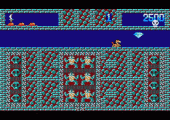
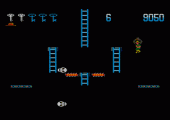
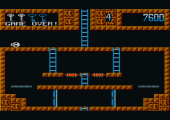
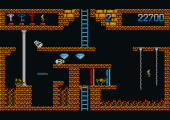
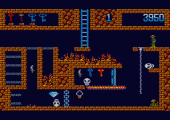
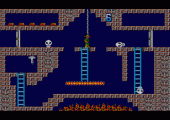
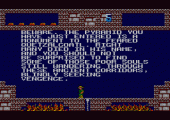
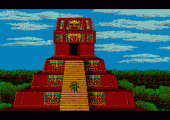
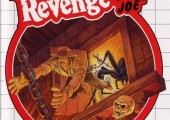
Recent Comments